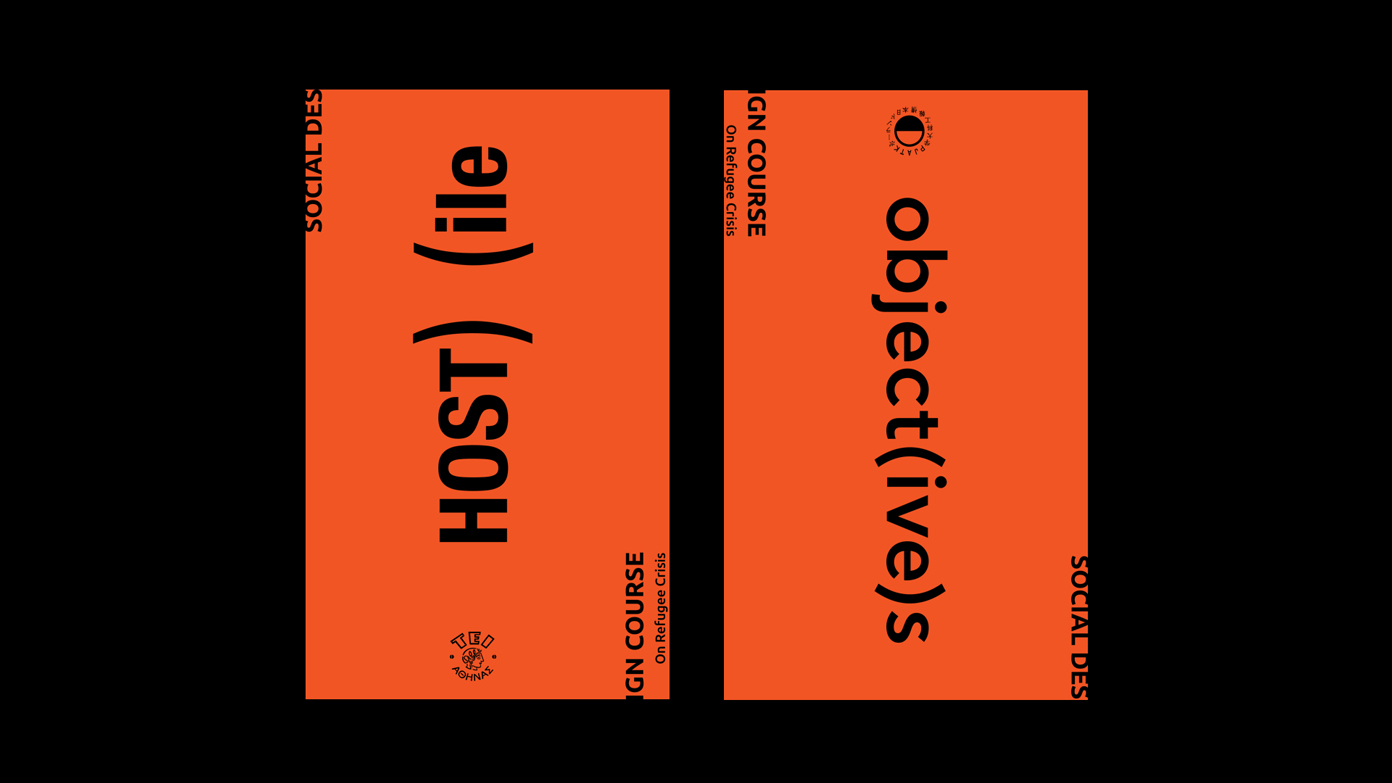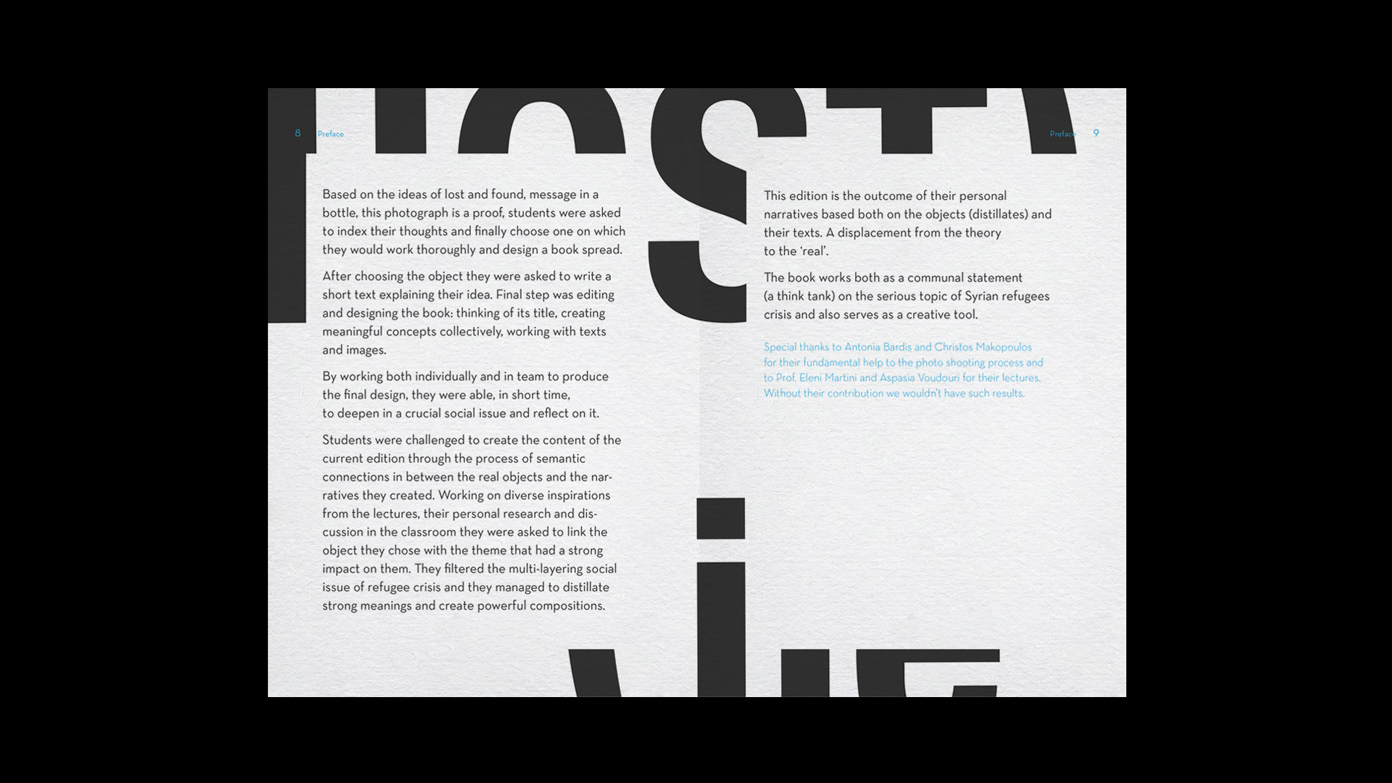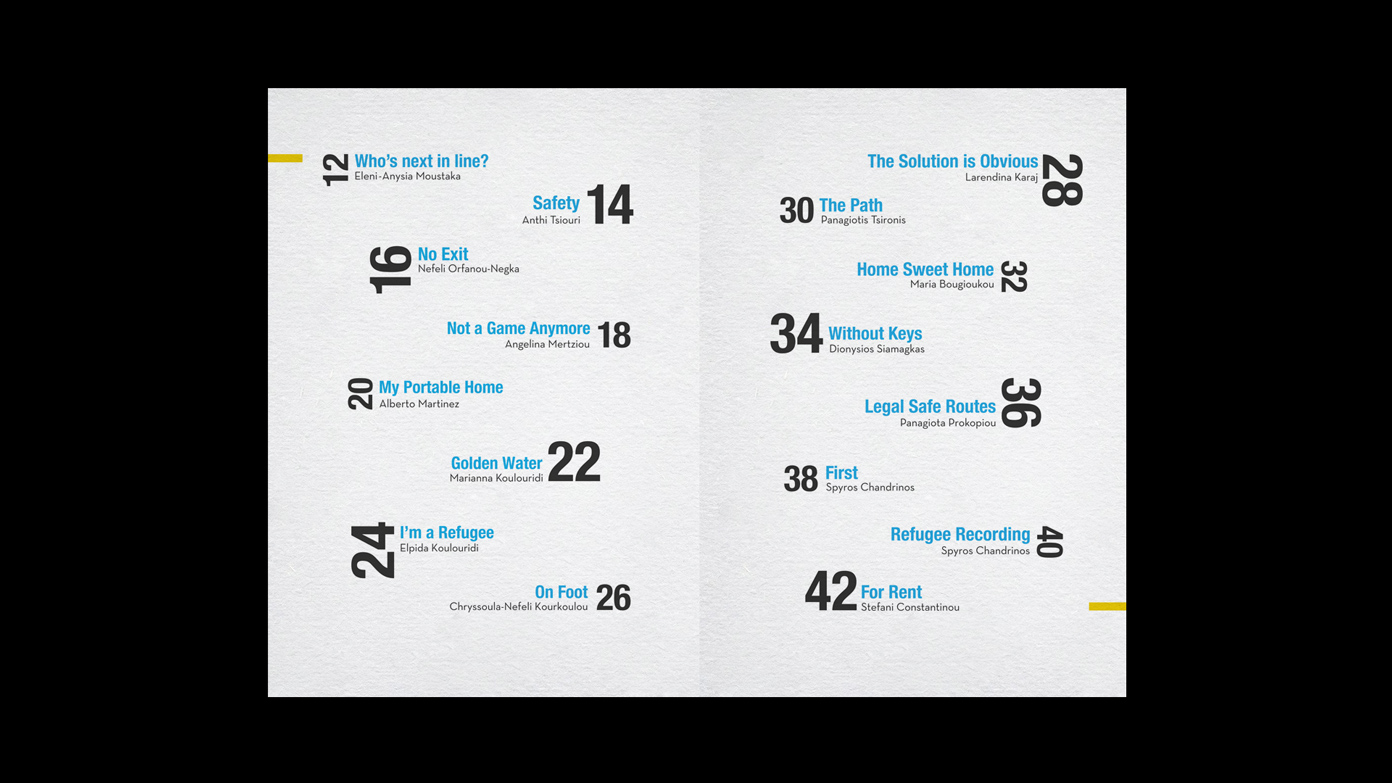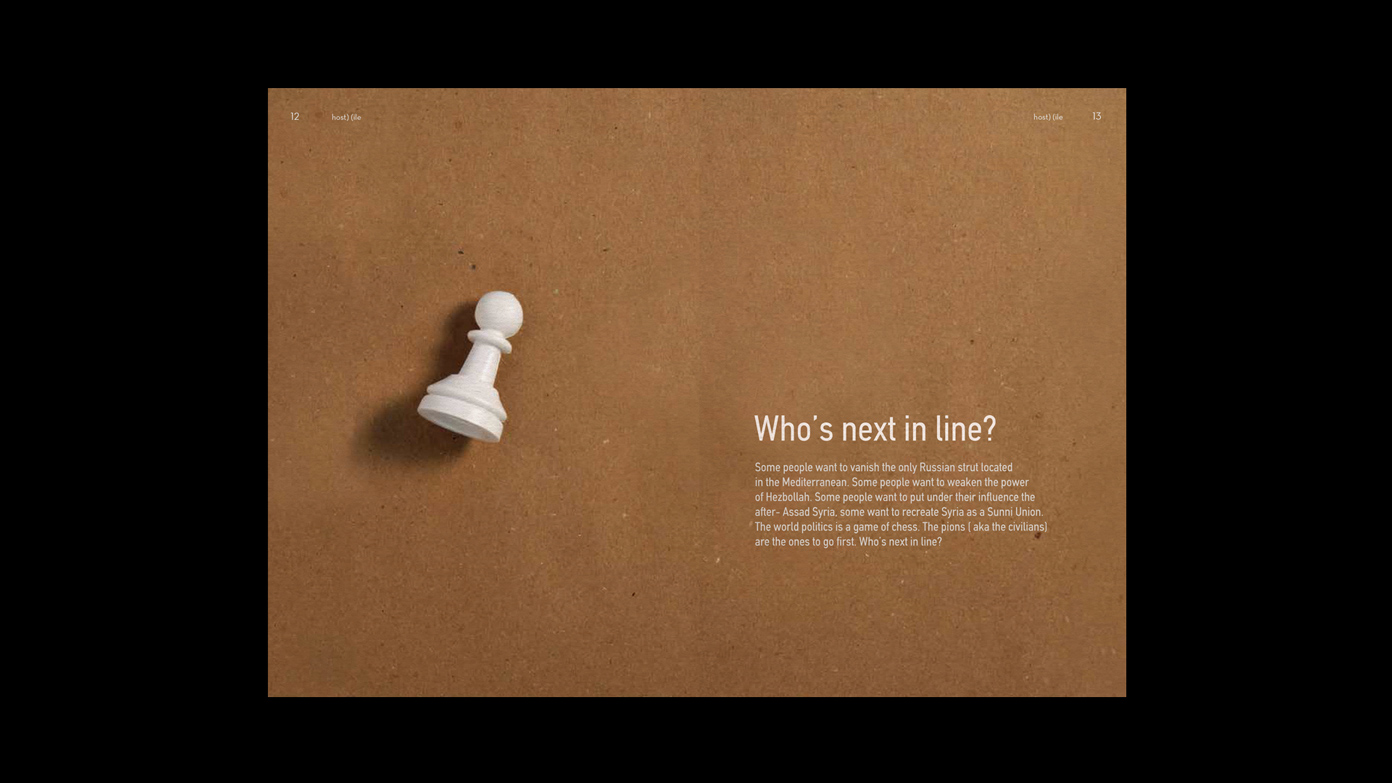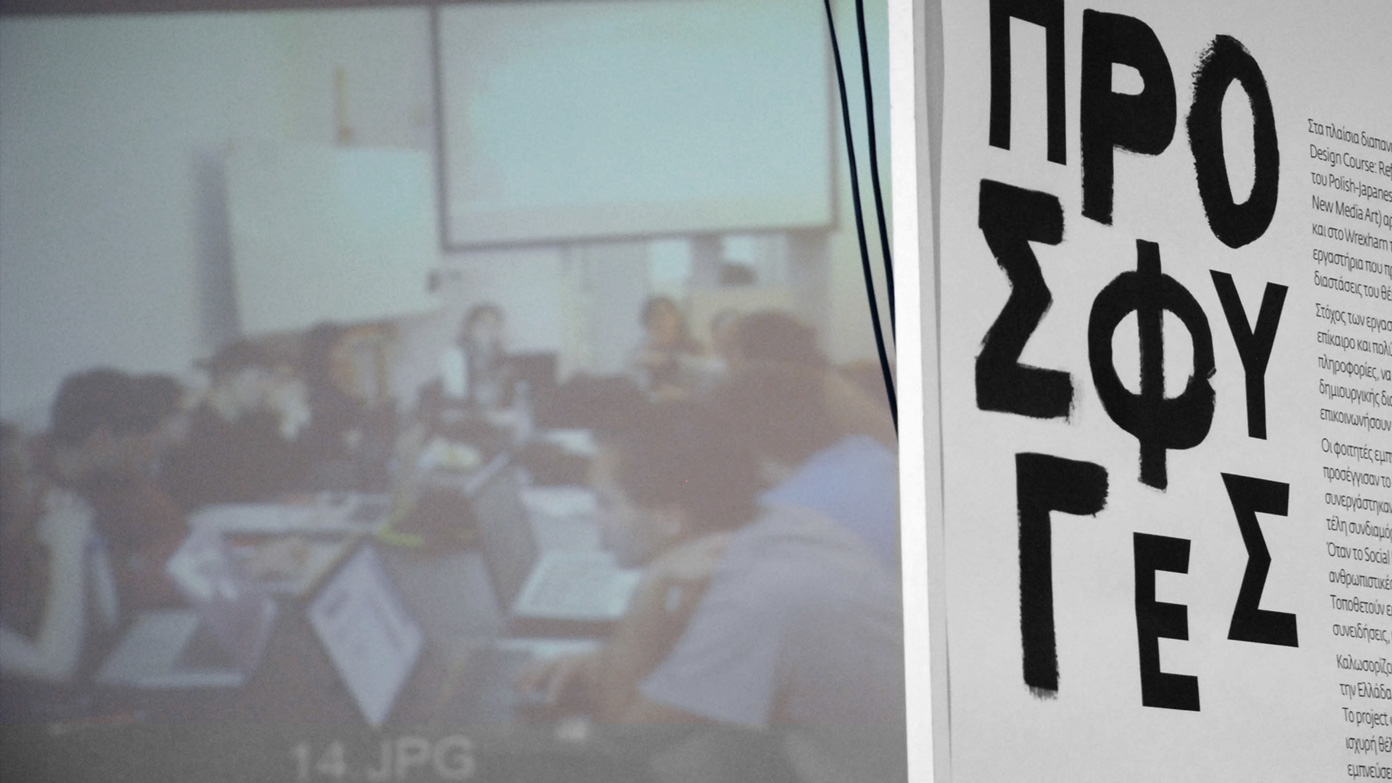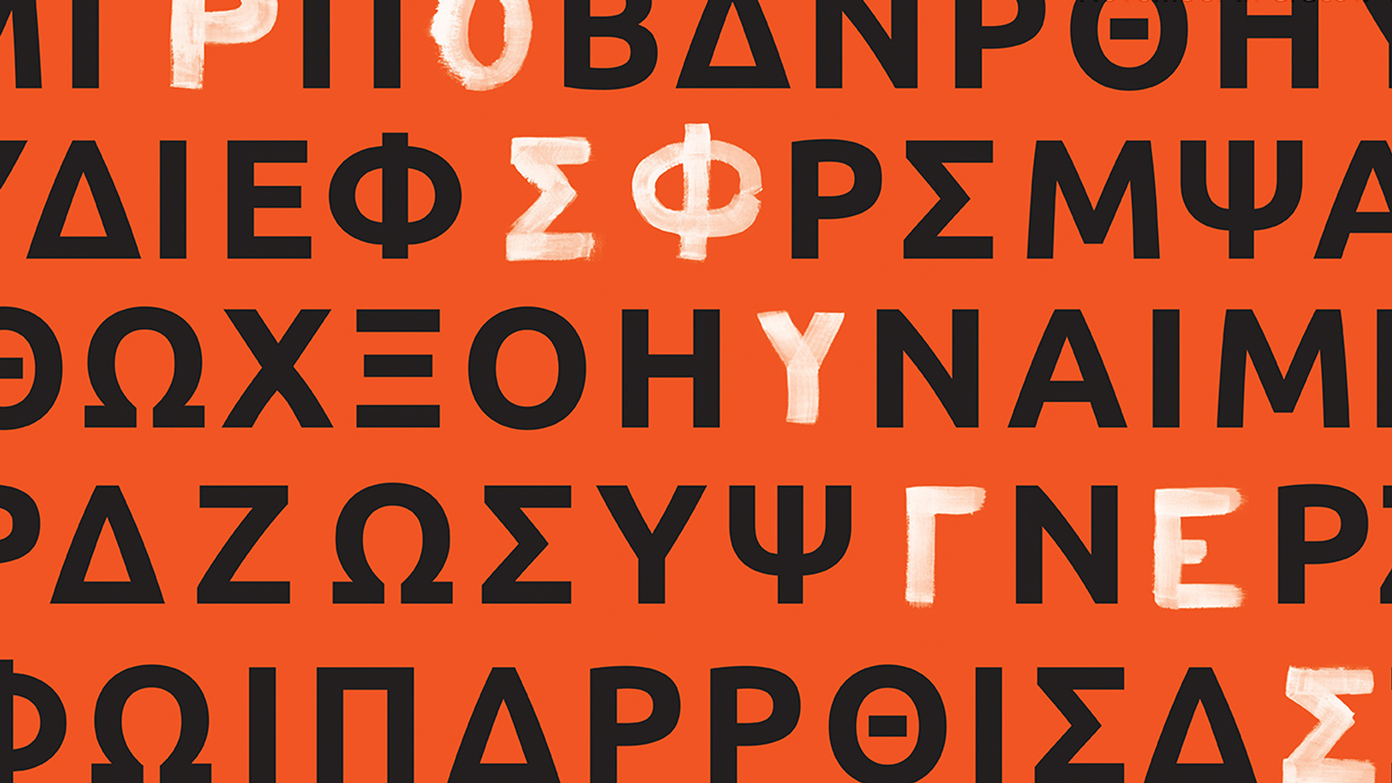
Refugees exhibition
fields
- visual identity
- exhibition
- editorial design
credits
- Marta Zofia Myszewska
- Angelina Mertziou
- Maria Bougioukou
- Dionisis Siamagas
This exhibition was conceived to provide a brief overview of the social design projects emerged after 24 lectures, 7 workshops and the involvement of 65 students from three Art and Design Academies. The project aims to raise awareness about the refugee crisis.
The series of exhibitions started in Athens, Greece, semantically connected with a specific historical moment where the refugee crisis is at its peak. Keeping in mind the key visuals set from Warsaw exhibition, we developed the identity of Athens exhibition including the poster, logotype and promotional print/web material.
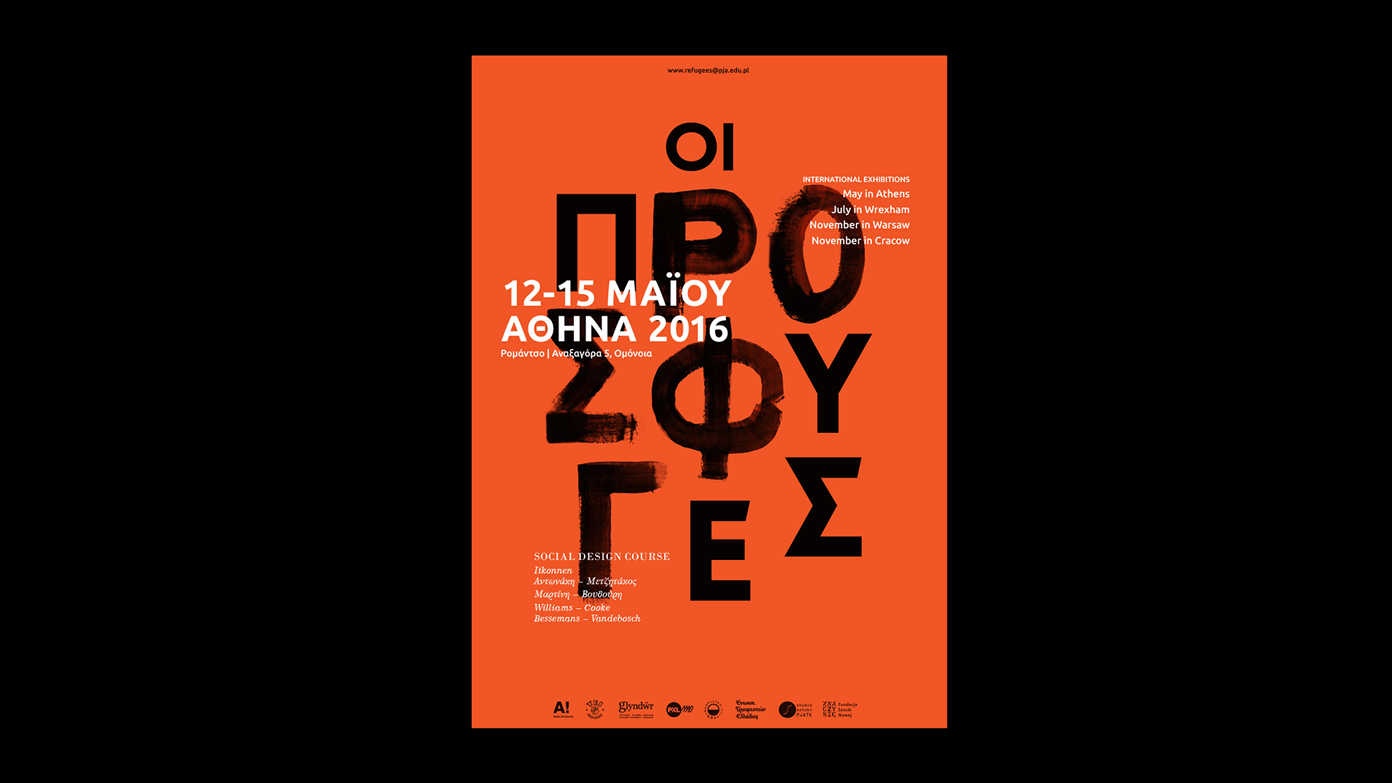
Visual language
The identity is based on handwritten typographic elements in black, which symbolises the black borders in human migration. Bright orange is also widely used as a visual symbolism for life vests.
Through these two elements we reached a bold visual result, vibrant and versatile through a variety of applications.
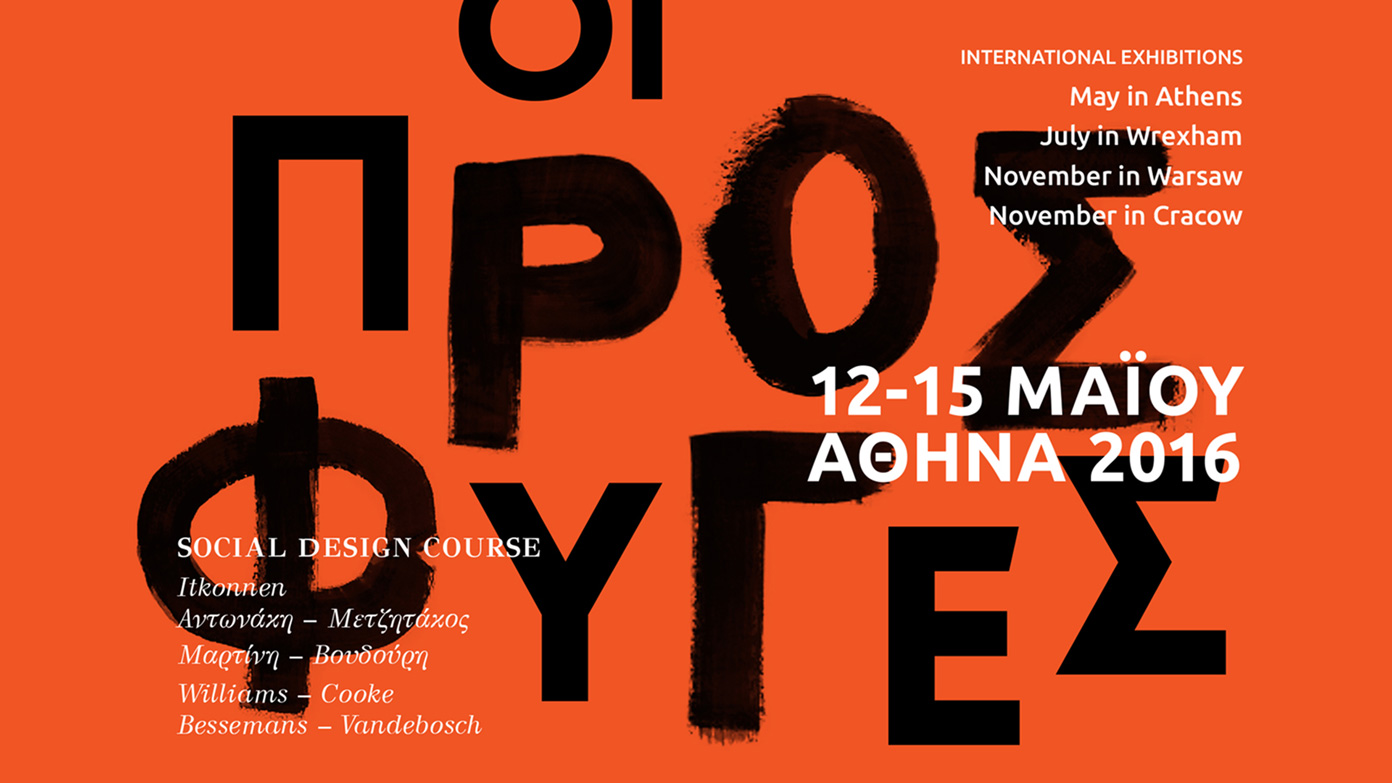
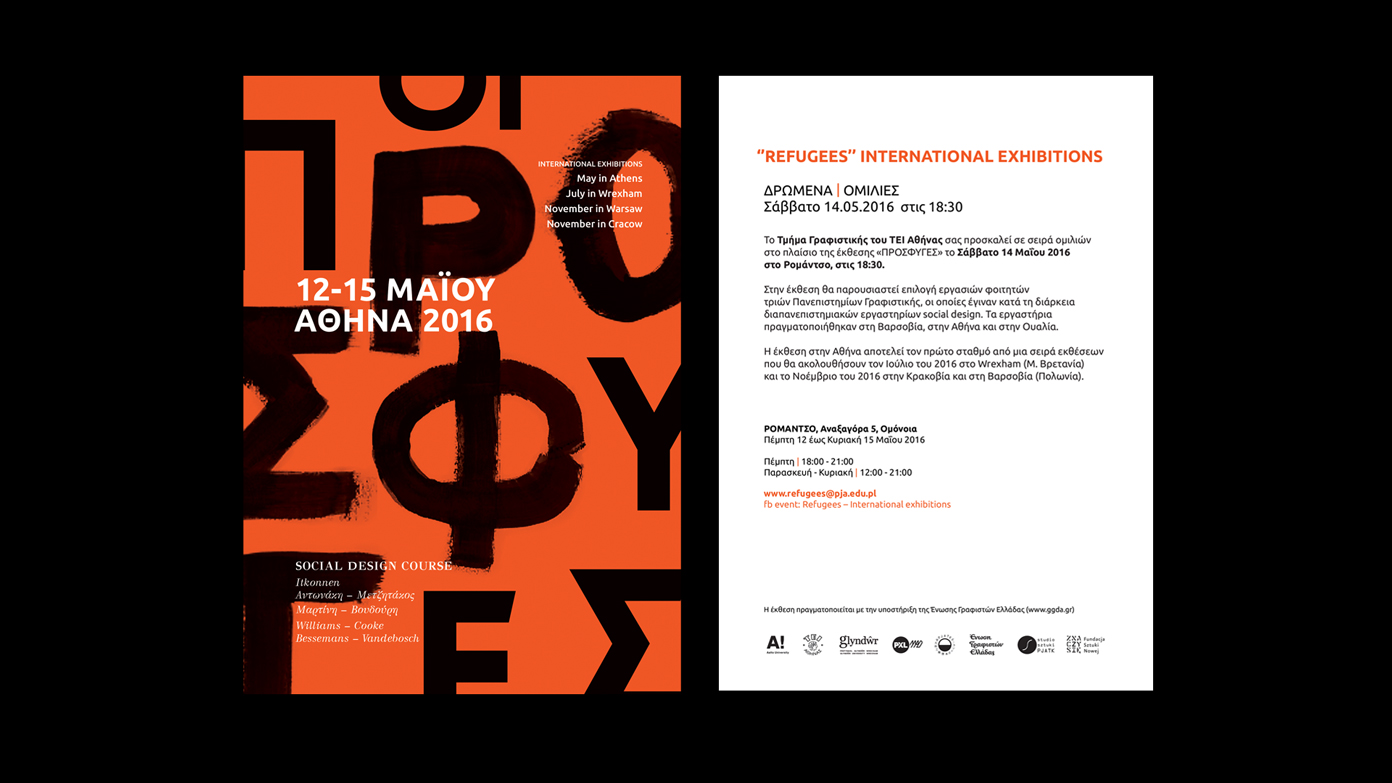
The workshop
In this Social Design workshop on Refugee Crisis (tutors: Katerina Antonaki, Rossetos Metzitakos), we were asked to choose an object in order to demonstrate a point of view regarding Syrian Refugee Crisis. Later on, based on the same concept, we were asked to create a poster for our participation in ‘‘Refugees’’ International exhibitions (May in Athens, July in Wrexham, November in Warsaw, November in Cracow).
The object I used is a pion. Syrian people are presented as ‘’expendables’’ (as soldier pions during a chess match) and insignificant, being sacrificed in the name of huge financial profits of the international circumstances.
The catalogue
For the purpose of the exhibition, we included the results of the Social Design Workshop by both T.E.I. of Athens and PJATK University, in a double-sided publication. As previously referred, it’s a book based on objects collection. “An empirical investigation through making semantic connections. A displacement from theory to “real” objects.”, as Katerina Antonaki, tutor and coordinator of the course, states at the preface of the catalogue.
